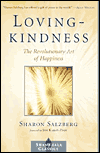
Image by Free-Photos
I teach one thing and one only:
that is, suffering and the end of suffering.
-- THE BUDDHA
Once I gave a talk on the differences between aversion and compassion. Someone came to speak to me, quite upset. He told me about his sister who was severely brain-damaged and in a nursing home, all too often receiving substandard care. He insisted that only his repeated, infuriated interventions were keeping her alive in that institution. His whole body was trembling as he spoke. After some moments, I asked him, "What is your inner reality like?" He replied, "I'm dying inside. The anger is killing me!"
Certainly there are injustices to be named in this world, and hate-filled situations to be changed, and inequities to be remedied. There is appropriate treatment to be demanded, without prejudice or fear. But can we do these things without destroying ourselves through anger?
Can you imagine a mind state in which there is no bitter, condemning judgment of oneself or of others? This mind does not see the world in terms of good and bad, right and wrong, good and evil; it sees only "suffering and the end of suffering."
What would happen if we looked at ourselves and all of the different things that we see and did not judge any of it? We would see that some things bring pain and others bring happiness, but there would be no denunciation, no guilt, no shame, no fear. How wondrous to see ourselves, others, and the world in that way!
When we see only suffering and the end of suffering, then we feel compassion. Then we can act in energetic and forceful ways but without the corrosive effects of aversion. Compassion can lead to very forceful action without any anger or aversion in it. When we see a small child reaching toward a hot burner on a stove, we instantly take action! Our response is born out of the compassion we feel: we move to pull the child back, away from harm. We do not reject or condemn the child.
Being Compassionate
To be compassionate is to wish that a being or all beings be free from pain. To be compassionate is to sense from within what it must be like to experience someone else's experience. I had such an opening at the end of my first visit to the Soviet Union.
In the airport, just as I was leaving, I had to go through Soviet passport control. This inspection was done quite formally because, I imagine, they did not want Soviet citizens leaving the country with falsified foreign passports. So, passport control was something of an ordeal. Smiling, I handed my passport to a uniformed Soviet official. He looked at my picture, and he looked at me, and he looked at my picture, and he looked at me. The look he gave me was, I think, the most hateful stare I have ever received from anybody in my life. It was an icy rage. It was the first time in my life that I had experienced that kind of energy so directly and personally. I just stood there, shocked. Finally, after quite a long period of time, the official handed me back my passport and told me to go.
I went to the transit lounge of the airport, where my traveling companions were waiting for me. I was very upset. I felt as though the man's energy had poisoned my being. I had absorbed his hatred, and I was reacting strongly to it. Then, in one moment, everything shifted. I thought, "If being exposed to his energy could make me feel so terrible after ten minutes, what would it be like to live inside that energetic vibration all the time?" I realized that this man might wake up, spend much of the day, and go to sleep in a state quite similar to the one I had just experienced from him. A tremendous feeling of compassion came into me for him. He was no longer a threatening enemy, but rather someone in what seemed to be intense suffering.
Viewing Life Compassionately
To view life compassionately, we have to look at what is happening and at the conditions that gave rise to it. Instead of only looking at the last point, or the end result, we need to see all of the constituent parts. The teachings of the Buddha can be distilled into an understanding that all things in the conditioned universe arise due to a cause.
Have you ever had the experience of feeling resentful toward someone and then having an insight into what in their history might have caused them to behave in a certain way? Suddenly you can see the conditions that gave rise to that situation, not simply the end result of those conditions.
Once I knew two people, who had both suffered from abuse in childhood. One, a woman, grew up to be quite fearful, while the other, a man, grew up to be quite angry. The woman found herself in a work situation with the man, disliked him intensely, and was trying to have him fired from his job. At one point in the process, she got a glimpse into his background and recognized how they both had suffered in the same way. "He's a brother!" she exclaimed.
This kind of understanding does not mean that we dismiss or condone a person's negative behavior. But we can look at all of the elements that go into making up that person's life, and can acknowledge their conditioned nature. To see the interdependent arising of these impersonal forces that makeup our "selves" can provide the opening for forgiveness and compassion.
Compassion means taking the time to look at the conditions, or the building blocks, of any situation. We must be able to look at things as they are actually arising in each moment. We must have the openness and spaciousness to see both the conditions and the context.
We may, for example, hear a statement such as "Heroin is a very dangerous drug." This is undoubtedly true. But is it necessarily true for someone who is terminally ill, in excruciating pain? What is the context of the reality of the moment? If we can look in that way, we are not held to rigid categories that may close off our compassionate understanding.
Expressing Compassion
Whatever life presents to us, our response can be an expression of our compassion. Whether someone speaks truthfully to us or deceitfully, harshly or gently, we might respond with a loving mind. This is also an act of compassionate service.
The Buddha himself expressed compassion in many different ways. His compassion was measureless, reaching from the most personal level to the most absolute. His service to beings ranged from caring for the sick to teaching a path of liberation. To him, the two were not distinct from each other.
Once a monk in the Buddha's time came down with a terrible disease that had some very unpleasant manifestations. He had, according to the text, oozing sores that looked and smelled so horrible that everybody avoided him completely. This monk lay helpless in bed, dying a grisly death with no one to care for him. When the Buddha became aware of this situation, he himself went into the monk's hut, bathed his wounds, cared for him, and gave him reassurance and spiritual instruction.
Later, the Buddha addressed the monastic community, saying that if somebody wanted to serve him, the Buddha, they should look after the sick. Those words seem so like ones spoken nearly five hundred years later by another compassionate spiritual teacher: "Whatsoever you do unto the least of these, so also you do unto me."
Developing Compassion
According to the Buddha, to develop compassion it is important to consider the human condition on every level: personal, social, and political. Once the Buddha described a king who decided to give over his kingdom to his son. He instructed him to be both righteous and generous in his new role as king. As time went on, although the new king took care to be just, he neglected to be generous. People became much poorer in his kingdom, and thievery increased. The king tried to suppress this thievery by instituting many harsh punishments.
In commenting on this story, the Buddha pointed out how unsuccessful these punishments were. He went on to say that in order to suppress crime, the economic conditions of the people needed to be improved. He talked about how grain and agricultural help should be provided for farmers, capital should be given to traders, and adequate wages should be given to those who are employed.
Rather than responding to social problems through taxation or punishment, the Buddha's advice was to see the conditions that have come together to create a context in which people behave in a certain way, and then to change those conditions. The text states that poverty is one root of theft and violence, and that kings (or governments) must look at such causes in order to understand the effects.
It is much easier to be moral if one's life is secure in some way, and much more difficult to refrain from stealing if one's children or parents are hungry. Thus our commitment should be to create conditions so that people can more easily be moral. The very pragmatism of this teaching of the Buddha reflects the depth of his compassion.
Developing A Compassionate Heart
The Buddha's teaching is never removed from a sense of humanity. He described the motivating principle of his life as dedication to the welfare and the happiness of all beings, out of sympathy for all that lives. He also encouraged the same dedication in others: to see our very lives as vehicles to bring happiness, to bring peace, for the benefit of all beings.
A compassionate act does not have to be grandiose. The very simple action of love, of opening to people, of offering somebody some food, of saying hello, of asking what happened, of really being present -- all are very powerful expressions of compassion. Compassion enjoins us to respond to pain, and wisdom guides the skillfulness of the response, telling us when and how to respond. Through compassion our lives become an expression of all that we understand and care about and value.
To develop a compassionate heart is not just an idealistic overlay. It arises from seeing the truth of suffering and opening to it. Out of this arises a sense of purpose, a sense of meaning so strong in our lives that no matter what the circumstances, no matter what the situation, our goal or our greatest desire at any moment is to express genuine love.
Our inherent capacity for love can never be destroyed. Just as the whole earth cannot be destroyed by someone repeatedly hurling themselves against it, so too a compassionate heart will not be destroyed in an onslaught of adversity. Through practicing compassion, we develop a mind that is vast and free from enmity. This is boundless, unconditioned love.
EXERCISE: Meditation on Compassion
In doing meditation specifically designed to nurture compassion, we usually use just one or two phrases, such as "May you be free of your pain and sorrow" or "May you find peace."
It is important that the phrase be meaningful to you. Sometimes people feel more comfortable using a phrase that implies the wish for a more loving acceptance of pain, rather than freedom from pain. You should experiment with different phrases, seeing which ones support a compassionate opening to pain and which ones seem to lead you more in the direction of aversion or grief.
The first object of the compassion meditation is someone with great physical or mental suffering. The texts state that this should be a real person, not just a symbolic aggregate of all suffering beings. Spend some time directing the compassion phrase toward this person, remaining cognizant of their difficulties and heartaches.
You can progress from there through the same sequence that unfolds in the metta practice: self, benefactor, friend, neutral person, difficult person, all beings, all living beings, ... all females, all males ... all beings in the ten directions.
Take up the compassion practice at your own pace -- move from category to category as you feel ready. Remember that all beings face great potential suffering, no matter how fortunate their immediate circumstance might be. This is simply the nature of change in the course of life's unfolding.
If you feel yourself moving from the trembling of the heart that is compassion into states of fear, despair, or sorrow, first of all accept that this is natural. Breathe softly, and use your awareness of the breath to anchor yourself in this moment. Reach underneath the fear or rejection of pain to the sense of oneness with all beings that underlies it. You can reflect on that sense of oneness and rejoice in it.
Suffering is an intrinsic part of life and will certainly not disappear from the lives of beings no matter how earnestly we wish for it to. What we are doing in the compassion meditation is purifying and transforming our relationship to suffering, whether it is our own or that of others. Being able to acknowledge suffering, open to it, and respond to it with a tenderness of heart allows us to join with all beings, and to realize that we are never alone.
EXERCISE: Compassion for Those Who Cause Pain
A further compassion meditation begins with using the phrase "May you be free of your pain and sorrow," directed toward someone who is causing harm in the world. This is based on the understanding that causing harm to others inevitably means creating harm for oneself, both now and in the future. Seeing someone lie, steal, or hurt beings in some other way is therefore the ground out of which compassion for them can arise.
When I've taught this meditation on retreats, people often choose their least favorite political leader as the object. It is not necessarily an easy practice, but it can revolutionize our understanding.
If you are filled with judgment or condemnation of yourself or others, can you revise your perceptions to see the world in terms of suffering and the end of suffering, instead of good and bad? To see the world in terms of suffering and the end of suffering is buddha-mind, and will lead us away from righteousness and anger. Get in touch with your own buddha-mind, and you will uncover a healing force of compassion.
You can move from directing compassion to someone creating harm, through the cycle of beings (self, benefactor, etc.). Notice particularly whether this meditation, over time, creates a different relationship to yourself, and to your enemy. Remember that compassion doesn't need to justify itself -- it is its own reason for being.
Reprinted with permission of the publisher,
Shambhala Publications, Inc. ©1995. www.shambhala.com
Article Source
Lovingkindness: The Revolutionary Art of Happiness
by Sharon Salzberg.
 Longtime meditation practitioner and teacher Sharon Salzberg draws on Buddhist teachings, wisdom stories from various traditions, her own experiences, and guided meditation exercises to unearth the radiant heart within each one of us. Discover how the practice of lovingkindness illuminates a path to cultivating love, compassion, sympathetic joy, and equanimity, helping us realize our own capacity for goodness and a new connection with all beings.
Longtime meditation practitioner and teacher Sharon Salzberg draws on Buddhist teachings, wisdom stories from various traditions, her own experiences, and guided meditation exercises to unearth the radiant heart within each one of us. Discover how the practice of lovingkindness illuminates a path to cultivating love, compassion, sympathetic joy, and equanimity, helping us realize our own capacity for goodness and a new connection with all beings.
Info/Order this book. (new edition, different cover). Also available in a Kindle edition.
About the Author
SHARON SALZBERG has been practicing Buddhist meditation for over twenty-five years. She is a cofounder of the Insight Meditation Society in Barre, Massachusetts, and teaches meditation around the country. Visit her website at www.sharonsalzberg.com




























